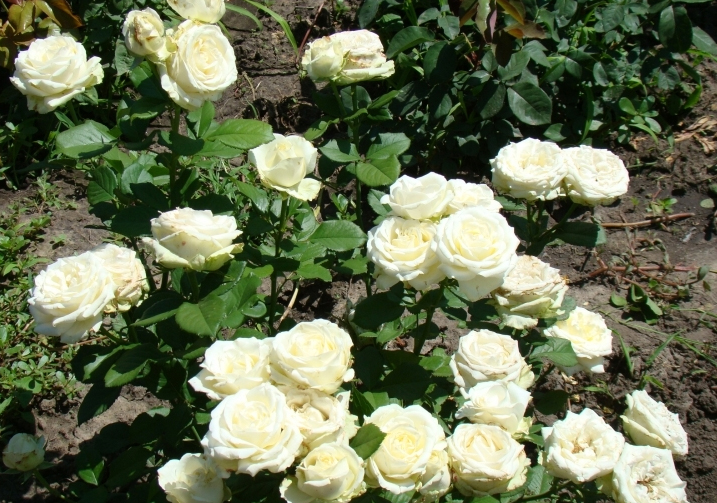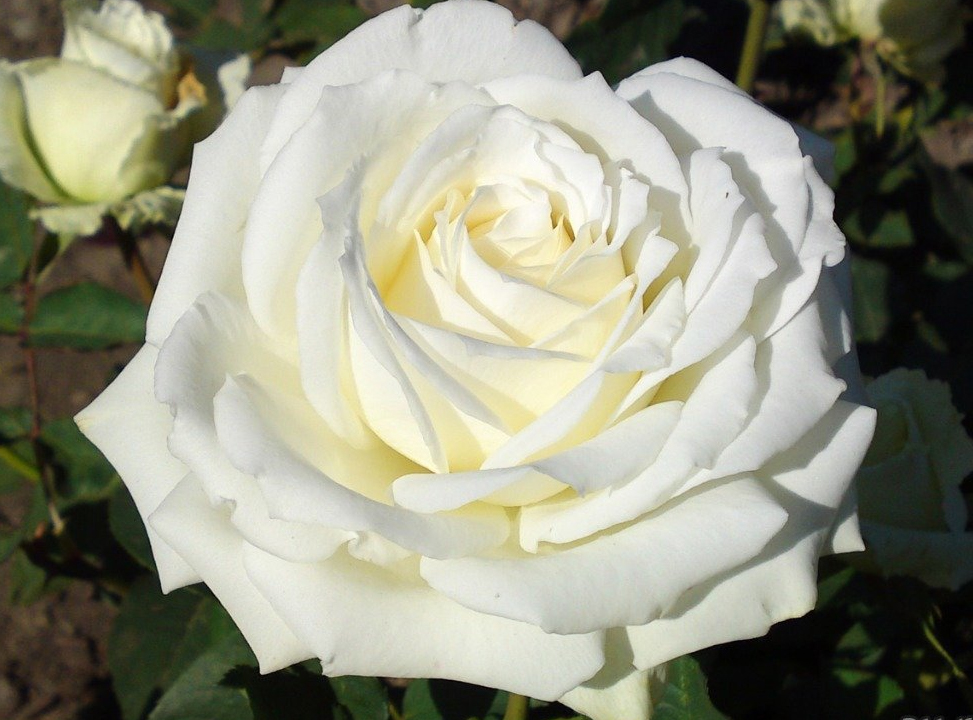What is the peculiarity of the Avalange rose: cultivation, varieties with photos
Content
- 1 History of creation
- 2 Description and characteristics of the rose Avalange
- 3 Varieties of varieties with photos
- 4 Advantages and disadvantages
- 5 Video "Review of Avalange hybrid tea roses"
- 6 Features of planting and caring for a flower
- 7 Diseases and pests of the variety
- 8 Application of the Avalange rose in floristry and landscape design
- 9 Variety reviews
History of creation
Rose Avalanche belongs to the hybrid tea group and is characterized by an unusually beautiful flowering. The name of the variety means "avalanche" in translation. The variety is native to the Netherlands, where renowned breeder Lex Wurn created the variety in 2004. Another name for the variety is Lexani.

Description and characteristics of the rose Avalange
The Avalange rose shrub is not too tall - it grows up to 80 cm.The variety also cannot be called sprawling - it is quite compact and miniature, only 50 cm in diameter.The shoots of the bush are very elastic and strong, do not bend under the gusts of wind and the weight of flowers. The branches are slightly covered with thorns. As a rule, one bud is formed on each shoot. The branches of the shrub are densely covered with dark green foliage, which has a characteristic matte layer.
Avalange rose buds have a conical shape. As the flower opens, the outer petals turn outward rather strongly, as a result of which the bud forms a cupped shape. Each flower has approximately 20 petals. The diameter of the blossoming bud is about 10 cm, which characterizes the flower as rather large.
The color of the flowers deserves special attention - it is quite unusual, bordering between creamy and pistachio. This is probably why the plant is so fond of domestic gardeners.

The variety belongs to the category of frost-resistant, as it is able to withstand a drop in temperature to -25 ° C without much loss. The variety is characterized by medium resistance to various diseases.
Varieties of varieties with photos
The Avalange variety is so fond of flower growers all over the world that breeders have bred several more varieties.
Candy avalanche
Translated from English means "sweetness", "candy". This variety can really be compared with some kind of dessert, because the flowers of the rose are very bright and fragrant. Candy buds are pink in color and reach a diameter of 10 cm. The scent of flowers is similar to fruity, it is quite intense.
Peach avalanche
Quite large peach-colored buds are formed on the bush. Unlike other varieties of the variety, Peach Avalange is distinguished by neat flowers, which, even when fully expanded, retain their compact shape.
Pink avalanche
This hybrid tea variety is characterized by delicate pink flowers. They are quite large and lush. In a state of full disclosure, they resemble a marshmallow.
Sweet avalanche
These are perhaps the largest roses of all Avalange varieties. The diameter of the blossoming buds of Sweet Avalange is 12-14 cm. The color of the flowers is delicate apricot with a cream undertone.
- Sweet avalanche
- Pink avalanche
- Peach avalanche
- Candy avalanche
Advantages and disadvantages
- compactness of the bush;
- large bud sizes;
- long flowering period;
- resistance to low temperatures and many diseases;
- the ability to adapt to climatic conditions;
- light aroma;
- long shelf life of cut flowers.
- exactingness to the composition of the soil, which scares off many flower growers.
Video "Review of Avalange hybrid tea roses"
This video examines the main varietal characteristics of the flower.
Features of planting and caring for a flower
To enjoy the scent of the Avalange rose, it is important to follow certain rules of agricultural technology.
Optimal growing conditions
Planting is done in mid-spring. Since the variety belongs to the hybrid tea group, it is recommended to plant the rose in sunny areas. However, it is very important that these places are reliably protected from through winds.
A slightly acidic soil is ideal for this variety. Experienced gardeners regulate the acidity of the soil by adding lime, peat or wood ash. The soil must be abundantly moistened before planting. At the bottom of the pit, it is worth pouring a thick layer of drainage, which will resist the stagnation of moisture in the ground.

Planting tips
The optimal depth of the fossa is considered to be 50-60 cm. It is definitely worth adding fertilizing in the form of organic fertilizer to the hole. Particular attention must be paid to the preparation of planting material.
6-7 hours before planting, the seedlings should be soaked in plain water. This will saturate the planting material with moisture and allow you to quickly adapt to new conditions.
Also, seedlings are often placed in a growth stimulant solution, which accelerates the rooting and vegetation processes.
Seasonal care and wintering
Watering is the foundation of plant care. The most important thing in this process is the water temperature - it should be at room temperature. This is especially important in hot weather when it is necessary to minimize the difference between the temperature of the water and the environment. In summer, watering is carried out twice a week. With the arrival of autumn, the frequency of watering is reduced, gradually reducing to zero. One bush accounts for about 20 liters of water.
Weeding is another important condition for the successful cultivation of a rose. Getting rid of weeds from the soil allows shrubs to be provided with proper nutrition. After all, weeds, especially if they grow in large numbers, literally suck out all the useful elements from the soil.
Preparation for winter consists in covering the root area of the bush with peat or warming this area with non-woven material. With the arrival of spring, the plant is immediately opened. Timely disposal of the bush from insulation allows you to prevent rotting of the root system.

Spring is considered the best time for pruning. The pruning procedure is carried out after the buds bloom on the bush. This pruning allows you to give the bush the desired shape and rid it of dry and damaged branches.
Diseases and pests of the variety
The most common and dangerous diseases of Avalange are:
- spotting;
- rust;
- gray rot;
- powdery mildew.
In addition, the danger comes from small pests:
- green aphids;
- spider mite.
To protect your shrub, it is important not to neglect preventive measures. It is recommended to regularly treat the plant with special insecticidal preparations that scare off pests and prevent infection with a serious disease.
Application of the Avalange rose in floristry and landscape design
Roses of the Avalange variety become a bright accent of absolutely any garden plot. This culture is planted in the form of a hedge, in a flower bed or as an element of a flower arrangement.
It is not in vain that this variety of roses is very popular with florists - the buds are cut for a very long time and are harmoniously combined with other flowers.

Variety reviews
The gardeners' reviews characterize the Avalange variety as one of the best varieties of hybrid tea roses.
“Roses of Avalange are my love. About two years ago, she began to actively grow them in her garden area and never regretted it. They are generally unpretentious and bloom all summer and half of autumn. "
“As far back as I can remember, my parents have always grown roses in the country. The period when they bloomed resembled some kind of fairy tale, because the whole garden was filled with aroma. Now I myself have started growing rose bushes. I can say with confidence that Avalange is one of the most beautifully flowering, but absolutely unpretentious varieties. "
Avalange perfectly adapts to weather conditions and is able to survive even the most severe frosts. This is probably why the plant is so prized by Russian gardeners.




